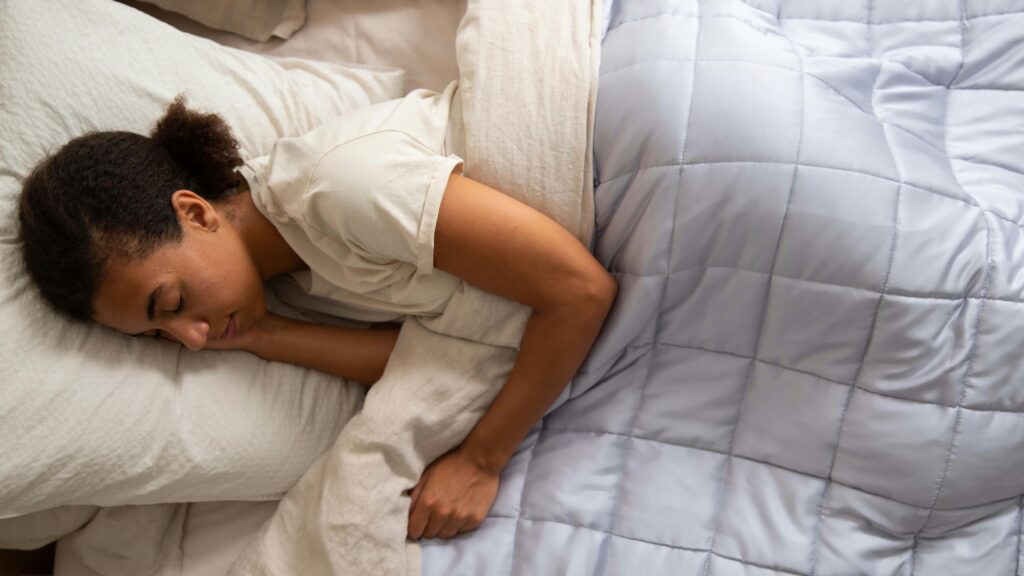Women are gifted jugglers. They juggle their time between work, home, kids, family, chores and a million other tasks every day. However, can all this multi-tasking lead to health problems? Many studies have suggested that women generally are more prone to certain nutrient deficiencies than men.
Nutrient deficiencies can lead to a lot of health risks, from simple aches and pains to more serious diseases. Hence, it’s important to understand the importance of nutrients, the symptoms of nutrient deficiencies and how to ensure that your daily diet comprises enough nutrients. For starters, let’s look at what constitutes nutrient deficiencies.

Highlights
- Poor consumption or absorption of nutrients from foods leads to nutrient deficiency. Women are more prone to have nutrient deficiencies than men,
- Iron, vitamin B12 & D, calcium, magnesium, iodine and folate are the key players in causing nutrient deficiency in women,
- Poor diet, overexercise, certain medications and socio-economic situations can all lead to nutrient deficiency.
What is nutrient deficiency?
Nutrient deficiencies occur when an individual either doesn’t consume or cannot absorb enough nutrients like vitamins, minerals, or fatty acids. To determine whether you have certain nutrient deficiencies, your doctor will recommend certain blood tests, and the reports will be compared to the established recommended ranges. It’s important to note that even if you meet the bare minimum of this range, you could still be considered nutrient deficient as this number can be subjective to many things such as your age, weight, height, etc. So, it’s always better for your nutrient levels to be on the higher side.
What are the most common nutrient deficiencies in women?
Studies have shown that a woman’s nutrient consumption is dependent not only on a diet but several other factors like socioeconomic status, stress levels, overexercise and more. According to experts, around 30 per cent of all women have one or more vitamin and mineral deficiencies, and the risk associated with these deficiencies increases with age. Many doctors and nutritionists concur that some of the most common nutrient deficiencies in women are:
- iron,
- vitamin B12,
- vitamin D,
- calcium,
- magnesium,
- iodine,
- folate.
Let’s see how these deficiencies occur, the symptoms associated with the deficiencies and how to get these nutrients naturally through a good diet.
Iron deficiency
Iron deficiency and anaemia make for the most predominant nutritional deficiencies in the world (both in developing and developed countries). Women are especially vulnerable to iron deficiency because they menstruate and lose blood at least once a month. They need to make up for this loss by consuming more iron-rich foods. Iron is a key component of haemoglobin, a type of protein in red blood cells that carries oxygen from the lungs to different parts of the body. A lack of iron means fewer red blood cells to transport oxygen in the body, which can cause fatigue.
Some of the symptoms of iron deficiency include extreme tiredness, shortness of breath, brain fog, headaches, dizziness, muscle weakness, hair loss, brittle nails, swollen tongue and more. Women aged between 19 and 50 require about 18 mg of iron daily, while pregnant women need more—around 27 mg. Women above the age of 51 need less iron—about 8 mg.
Following is a short list of iron-rich foods that women should include in their diet. Animal sourced proteins are rich in heme iron, which the body absorbs more easily than the non-heme iron found in plants. Try to include turkey and fish in your daily diet, shellfish, red meat, liver and other organ meats in moderation. Vegetarian sources of iron include spinach, broccoli, legumes, pumpkin seeds, quinoa, tofu and dark chocolate.
How your body absorbs iron depends on your food combinations. Eating iron-rich foods with vitamin C—rich foods increases the body’s iron absorption. For instance, shellfish with citrus dressing. But eating iron-rich foods with sources of calcium (like dairy products) will decrease iron absorption, for example, spinach and cheese.
Vitamin B12 deficiency
Although vitamin B12 is found in many foods, its deficiency is still common among many, especially among women. Deficiency can occur if one has a limited dietary intake (vegan diets), certain medical conditions like Crohn’s disease, autoimmune disorders, or consumes B12-depleting medications like metformin and proton pump inhibitors (PPIs).
Vitamin B12 plays a vital role in maintaining good health by creating haemoglobin, which is a part of your red blood cells that aids the cells in the body to receive oxygen. It is also necessary for healthy digestion and neurological functions. Deficiency in vitamin B12 could lead to symptoms like balance issues, fatigue, constipation, muscle weakness, dry skin, anaemia and brain fog.
Women from the ages of 14 and up need 2.4 mcg of vitamin B-12 a day. This number goes up to 2.6 mcg a day for pregnant women. Good sources of vitamin B12 include liver, kidney and organ meats, beef, clams, sardines, tuna, trout, salmon, milk and dairy products and eggs. Since vitamin B-12 isn’t available through plant sources, vegans and vegetarians can get this nutrient from fortified cereal, fortified nutritional yeast and fortified non-dairy milk.
Vitamin D deficiency
Vitamin D deficiency is one of the most common deficiencies in women and men worldwide. Also known as the “sunshine vitamin”, it can be produced naturally in our bodies when exposed to sufficient amounts of UVB radiation from sunlight. People with Vitamin D deficiency aren’t able to absorb calcium, which in the long run, leads to loss of bone mass. Apart from supporting bone health, it plays an important role in maintaining cardiovascular health, testosterone and immune function.
Vitamin D deficiency can increase the risk of poor bone health, depression in women with polycystic ovary syndrome, rickets (bone softening in the baby) for pregnant women, obesity and type 2 diabetes. Other symptoms include fatigue, weakness and bone pain.
The best way to get your daily dose of vitamin D is to expose your face, hands and arms to 10-15 minutes of the mid-day sun without protective sunscreen. Exposure time can vary depending on the season, geographical location and skin colour. Be careful while exposing yourself to the sun as too much of it can increase your risk of skin cancer. Some of the dietary sources of Vitamin D include: salmon, herring and sardines, canned tuna, egg yolks, mushrooms, and vitamin D fortified foods like orange juice, soy milk, cereals and oatmeal.

Calcium deficiency
This is the most common deficiency among women. Young girls between the ages of 9 and 18 years and women above 50 years are most likely to have low calcium levels. Calcium is an essential mineral; your body needs calcium to build strong bones and teeth. Calcium is extremely important for postmenopausal women, considering a lack of it can lead to bone loss and heighten the risk for bone fractures/osteoporosis.
Calcium deficiency can occur due to poor intake of calcium (avoiding dairy products), taking medicines that reduce calcium absorption, hormonal changes (especially in women) and certain genetic factors. The symptoms of calcium deficiency don’t show up until the deficiency becomes severe. Some of the symptoms include confusion or memory loss, muscle spasms, depression, hallucinations, muscle cramps, weak nails and brittle bones.
According to the National Osteoporosis Foundation, women who are 50 years and under need 1,000 milligrams (mg) of calcium a day and women older than 51 need 1,200 mg of calcium a day. Some good sources of dietary calcium include poppy seeds, sesame seeds, celery seeds, and chia seeds, cheese, yoghurt, sardines and canned salmon, beans and lentils, almonds, whey protein, milk, leafy greens, rhubarb, amaranth, edamame and tofu, figs and fortified foods and drinks.
Magnesium deficiency
Another essential mineral that is on the list of common deficiencies among women is Magnesium. This mineral is necessary for over 300 different biochemical functions in the body and helps regulate calcium, potassium and sodium levels. It supports the immune system, keeps the heartbeat steady and, most importantly, helps with the creation of ATP (adenosine triphosphate; an energy-carrying molecule found in the cells of all living things).
Health problems like digestive disorders, leaky gut syndrome, chronic stress and consumption of medicines that lower someone’s magnesium levels can lead to magnesium deficiency. It is an important mineral for pregnant women as it helps build and repair the body’s tissues. Its deficiency during pregnancy can lead to preeclampsia, poor fetal growth, and even infant mortality. For women above 50, magnesium deficiency can heighten the risk of postmenopausal osteoporosis. Some of the symptoms of magnesium deficiency include leg cramps, muscle spasms, insomnia, anxiety, headaches and digestive issues like constipation.
You can meet your daily requirement of magnesium by including the following foods in your diet: Dark chocolate, avocados, nuts like almonds, cashews and Brazil nuts, seeds like flax, pumpkin and chia, legumes, tofu, whole grains, fatty fish, bananas and leafy greens.
Iodine deficiency
The Centers for Disease Control and Prevention states that women between the ages of 20 to 39 have the lowest urine iodine levels compared to women of all other ages. Iodine is essential for the thyroid gland to produce the hormones T3 and T4, which help control the metabolism. It is especially important for women trying to conceive and pregnant women, as it plays an important role in the brain development of the growing foetus.
Iodine deficiency occurs in people living in countries that have very little of the mineral in the soil. This includes South Asia, Southeast Asia, New Zealand and European countries. People who follow restrictive diets like the vegan diet and people who don’t use iodized salt can also be iodine deficient.
Iodine deficiency can lead to conditions like hypothyroidism, goitres, hormonal imbalances and trouble during pregnancy. Some of the symptoms of iodine deficiency include weight gain, thinning hair, excessive fatigue, heavy and irregular periods and feeling cold all the time.
The sources of dietary iodine are few; hence, it is one of the most common deficiencies in the world. You can get your recommended daily intake of iodine by including the following food items in your diet: seaweed, tuna, shrimp, yoghurt, dried prunes and iodized salt.
Folate deficiency
Folate, also called vitamin B-9 or folic acid, is one of the most crucial nutrients for women. Unfortunately, it is one of the most deficient nutrients in women. Folate is especially critical for pregnant women and their developing foetuses, as it helps build the baby’s brain and spinal cord. This vitamin is also necessary for DNA production, repair and the development of red blood cells.
A poor diet that does not include fresh fruits and vegetables, overconsumption of alcohol, diseases like Crohn’s disease, celiac disease, inflammatory bowel disease, kidney problems requiring dialysis and certain medications can all increase the risk of folate deficiency.
The symptoms of folate deficiency are quite subtle and include greying hair, tiredness, mouth sores and swelling of the tongue and growth problems. However, a folate deficiency that leads to anaemia may have noticeable symptoms, like chronic fatigue, weakness, lethargy, irritability, and shortness of breath.
Women with folate deficiency should include the following foods that contain high amounts of the vitamin in their daily diet: Broccoli, spinach, brussels sprouts, peas, bananas, melons, oranges, tomato juice, beans, legumes, mushrooms, kidney, liver and organ meats, poultry, eggs and fortified cereals.

Non-dietary causes of nutrient deficiency in women
Not all nutrient deficiencies occur due to a lack of consumption of the said nutrients. Following are some of the reasons why women suffer more from nutrient deficiency than men.
Chronic stress: Multitasking between home, work, family and kids can lead to daily stress that builds up over time. Chronic stress alters glucose metabolism, insulin sensitivity, and other appetite-related processes. This can lead to mood swings and cravings for foods that may not necessarily be nutrient-dense, for instance, deep-fried foods and candies.
Overtraining and extreme dieting: Many women work out for long hours but refuse to nourish their bodies adequately due to the possibility of weight gain. When the body does not get the required amount of energy it requires, it goes into a state of stress which leads to many health problems like fertility issues, poor bone health, anxiety and more.
Socio-economic status: Women from poorer countries tend to have more nutrient deficiencies than women from developed countries. They have no access to fresh fruits, vegetables, meat and dairy either due to financial constraints or climate conditions like droughts and famines.
Celiac nutrient deficiencies: Celiac disease damages the small intestine, making it unable to absorb nutrients from food. This often leads to nutrient deficiencies in minerals like iron, calcium, magnesium, zinc, some B vitamins, and vitamin D.
Conclusion
Nutrient deficiencies occur when a person doesn’t consume or isn’t able to absorb enough nutrients like vitamins, minerals, or fatty acids. Women are more prone to be nutrient deficient in iron, vitamin B12, vitamin D, calcium, magnesium, iodine and folate. Some of the non-dietary reasons for nutrient deficiency can be due to chronic stress, overtraining, restrictive and fad diets, socio-economic status, cultural upbringing and celiac disease.
Rather than relying on supplements, women should try and get their daily recommended intake of nutrients through dietary sources. A nutrient-dense diet includes fresh fruits and vegetables, whole grains, beans and legumes, dairy and eggs and animal proteins like red meat, poultry and seafood (moderation is the key).
Apart from following this kind of diet, women also need to make changes for a healthy lifestyle in order to combat nutrient deficiencies. This includes reducing smoking, reducing alcohol consumption, exercising in moderation, getting enough sleep, and reducing stress.
Disclaimer:The contents of this article are for general information and educational purposes only. It neither provides any medical advice nor intends to substitute professional medical opinion on the treatment, diagnosis, prevention or alleviation of any disease, disorder or disability. Always consult with your doctor or qualified healthcare professional about your health condition and/or concerns and before undertaking a new healthcare regimen including making any dietary or lifestyle changes.
References
- https://fullscript.com/blog/common-nutrient-deficiencies-in-women
- https://draxe.com/nutrition/nutrient-deficiencies-in-women/
- https://www.healthline.com/health/vitamin-deficiency-in-women
- https://www.healthline.com/nutrition/healthy-iron-rich-foods
- https://www.healthline.com/nutrition/vitamin-b12-deficiency-symptoms







